When you purchase an merchandise through hyperlinks on this web page, we could earn a fee. Our editorial content material shouldn’t be influenced by commissions. Learn the total disclosure.
Satsuma is without doubt one of the sweetest citruses on the market. Plus, it’s simple to peel and simple to develop. It’s an ideal fruit so as to add to your orchard or citrus grove.
When you’ve grown small, bitter, seed-filled mandarins that pull aside once you attempt to peel them, then rising satsumas will likely be a delight.
Cool climate doesn’t trouble satsumas, and as a dependable performer, your harvests will simply get larger yearly.
When you love satsumas otherwise you simply need an easy-going citrus tree on your backyard, preserve studying.
The satsuma orange (Satsuma unshiu) is initially from China, however the identify comes from the world of Japan the place a lot of the dad and mom of contemporary cultivars originated.
It’s a semi-tropical evergreen that’s extra chilly hardy than most citrus bushes, and it doesn’t have thorns like some citrus. Lime, I’m taking a look at you.
Hardy in USDA Rising Zones 8 to 11, if you happen to’re keen to place in somewhat further work to guard the tree throughout extended freezes, even these in Zone 7 can succeed at rising satsumas.
The fruits aren’t solely candy, juicy, and just about seed-free, however they’re a dependable supply of immunity-boosting vitamin C.
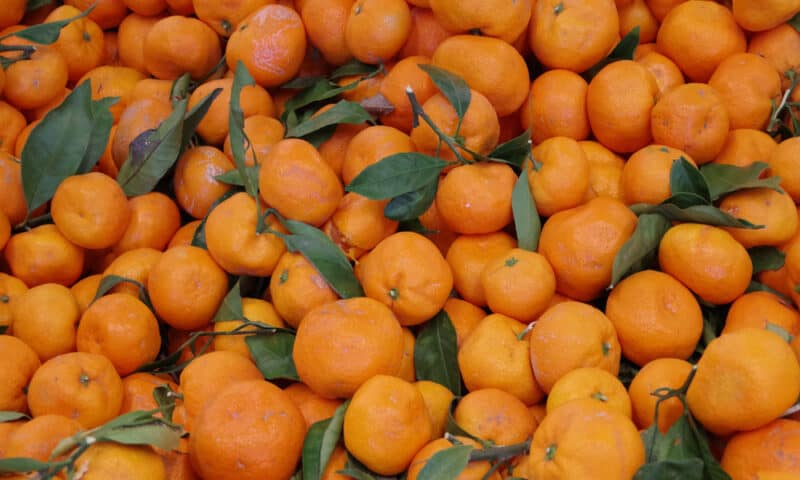

Satsuma is parthenocarpic, which suggests it develops fruit with out fertilization. This supplies the fruit with minimal or no seeds. It additionally means you don’t want pairs for pollination. The flowers of a satsuma have each female and male elements, making it a dependable cropper.
Additionally it is one of many first citrus to ripen for choosing in lots of areas, so that you don’t have to attend and wait to dig in. There’s a lot to like about rising satsumas. Let’s speak about a few of the finest choices for the house grower, subsequent.
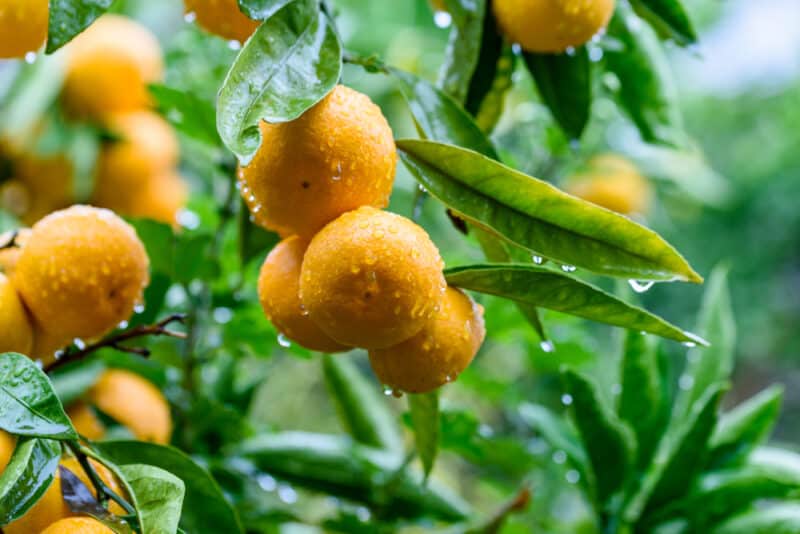

There are over 100 styles of satsuma. Listed here are a few of the finest for house growers:
This can be a gradual grower that you may plant within the backyard, but it surely’s additionally excellent for container planting, the place you may preserve it pruned to your required measurement and form. It was bred out of ‘Okitsu’ and launched in 1963.
It may develop as much as six toes tall in a container. Within the backyard, ‘Miho’ will develop as much as 12 toes tall and 6 toes broad.
The fruit is considerably oblate and sweeter than the usual fruit. It additionally matures barely earlier.
Because the identify says, this satsuma is bigger than others and is prepared sooner than many different cultivars. It has a skinny rind and candy juice.
It’s a dependable cropper prepared for harvest round late September to mid-October.
Bred by Satsuma grower Bonnie Childers out of an ‘Armstrong Early’ mum or dad, it reliably tolerates temps into the 20s.
This can be a frequent satsuma and will even be the one you purchase within the retailer. It’s the mum or dad of many spectacular cultivars and is without doubt one of the commonest to seek out commercially. When you’re rising satsumas, this can be a identify you’ll be coming throughout typically.
‘Owari’ is a late cropper with fruit that’s medium in measurement and candy. The fruit is often seedless, but it surely may need as much as six seeds. The tree will develop between 10 and 15 toes tall.
‘Brown Choose’s’ type is comparatively compact, and the branches are much less droopy than many different satsuma cultivars. A toddler of early-producing ‘Kimbrough,’ the fruit needs to be prepared round October to late November or later.
The rind of this Louisiana-bred cultivar is barely bumpy in comparison with the opposite satsuma, and they’re extraordinarily candy, medium-sized, and simple to peel. The fruit holds properly on the tree if you happen to’re the kind who doesn’t get out instantly in the course of the harvest season.
For a fair sweeter than regular satsuma, attempt ‘Silverhill.’ The fruit is barely flatter than different satsumas. This can be a dependable, vigorous tree with upright progress.
‘Silverhill’ was bred by botanist Walter T. Swingle in January 1931, after he observed a tree that wasn’t as injured by a shock Alabama freeze as the opposite ‘Owari’ bushes round it had been. The result’s a tree that may tolerate colder temperatures than different cultivars.
It has been in comparison with ‘Frost,’ one other chilly hardy cultivar.
Like ‘Massive Early,’ this satsuma is prepared for harvest a few month earlier than the later ones. You might be plucking fruit as early as September. The fruit is medium to massive and has skinny pores and skin that’s simple to peel.
‘Early St. Anne’ was bred from unknown parentage by Louisana State College’s citrus analysis program. The fruits are medium-large and oblate and have a superb tangy, candy taste.
If you’re in search of a high-yielding satsuma, this cultivar needs to be your alternative. ‘Kimbrough’ is bigger than many different cultivars, and it produces extra of them. They’re juicier and simpler to peel than different satsumas, too.
‘Kimbrough’ is late to ripen and the fruits won’t be prepared till November. The orange pores and skin has a reddish tinge to it.
Whereas the tree seems much like ‘Owari,’ it’s extra cold-tolerant.
Satsuma are comparatively gradual growers. Whenever you purchase a grafted tree, it’s possible a number of years outdated already. Your finest guess is to buy a kind of if you happen to’re desirous to take pleasure in fruits quickly after planting.
If time is in your aspect and also you wish to develop a satsuma from the beginning, you may take a chopping or plant one of many few seeds from inside the fruit, however once more, it will likely be a number of years earlier than you see any satsumas.
Lastly, a satsuma grown from seed received’t be the identical because the mum or dad plant.
In the course of the summer season months, take cuttings about six inches lengthy from a department with an energetic rising tip. Make the lower at a 45-degree angle.
Depart the brand new inexperienced tip and new leaves hooked up, however take away the entire decrease leaves from the remainder of the chopping. Dip the tip of the chopping in a rooting hormone like Bonide’s Bontone II rooting powder.
Plant the cuttings in good high quality seed-raising soil. Insert the underside third of the chopping into the soil and press evenly across the base to agency it into place.
Soak the soil with water and add extra soil if it settles an excessive amount of. Insert a toothpick or piece of wooden close to the chopping to carry up the plastic, and place a plastic bag over the container. This helps retain moisture.
The soil temperature needs to be within the vary of 70-75ºF. Use a warming pad if mandatory. The chopping wants direct solar for no less than six hours per day.
Over the subsequent six weeks, usually verify to ensure the soil isn’t drying out. Moisten as mandatory. On the six-week stage, loosen the plastic bag to let in some air, however depart it on.
In about two months, if there may be new, inexperienced progress on the chopping, take away the plastic bag fully.
Don’t be stunned if the beginning container is adequate for no less than a yr. After you have a lot of new progress, transplant the chopping exterior or into an enormous, everlasting container if that’s the place the satsuma goes.
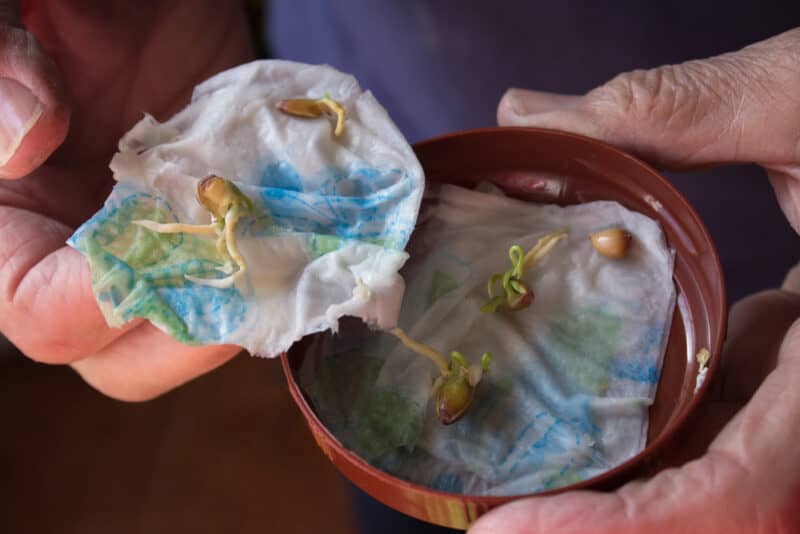

Like with cuttings, rising satsuma from seed is a protracted course of. The ensuing tree received’t be the identical because the mum or dad tree. When you’re feeling adventurous although, comply with these steps.
Discover a seed. Some fruits can have one or two in them, or you should purchase seeds.
Plant the seeds in a pot with seed-raising soil. There are some citrus-specific ones obtainable. Push the seed into the combo ever-so-slightly and barely cowl it with a sprinkle of extra combine. Spray properly with a twig bottle.
Put a plastic bag loosely over the pot and place this in direct daylight the place the inner temperature needs to be round 70ºF to 75ºF. Test each couple of days to make sure the soil stays moist.
After round 60 days, the seed ought to have germinated. Take away the plastic bag and preserve the soil moist till the seedling is about three inches tall.
Transfer the pot exterior the place it can get morning solar. Maintain this rising location till fall when you may switch it to a much bigger container and transfer it inside over winter.
Maintain shifting the container open air within the spring and produce it again indoors earlier than winter for the subsequent few years.
When it’s well-established and has a number of branches, switch it to its closing spot within the backyard, if you happen to’re rising satsumas within the floor. In any other case, plant in its everlasting pot.
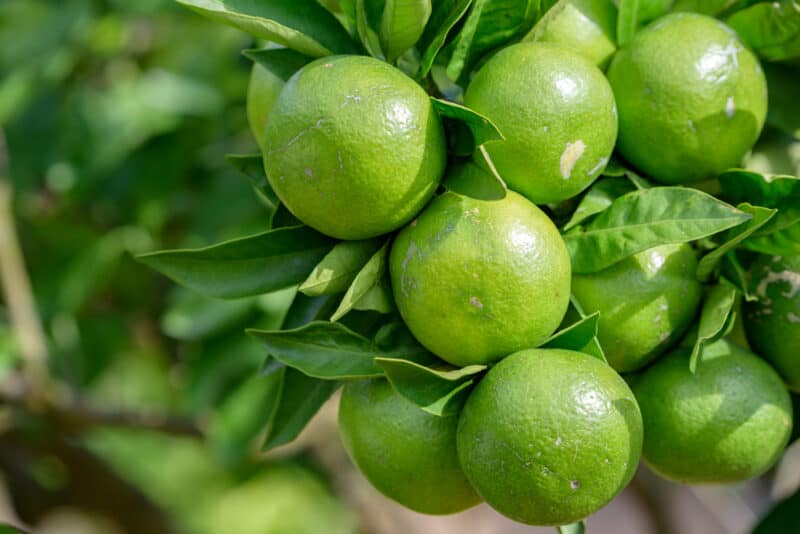

Satsumas love daylight, as do most citrus bushes. Ideally, you need the tree planted the place it can get solar all day, or no less than 10 hours value.
Satsumas require fairly constant heat, although they’re extra cold-hardy than different citrus. To get the most effective fruit, areas that present cool winters and sizzling and humid summers are finest.
A mature tree can take temperatures as little as 14ºF so long as it isn’t for too lengthy. When you’ve got a younger tree, take into account frost and chilly safety like mulching or spend money on a trunk wrap.
To get the sweetest satsumas, winters that sit round 25ºF to 35ºF are finest.
Fertilize with a citrus fertilizer in late January to early February, or once you discover new progress start to look.
Soil pH needs to be round 6.0 to 7.0.
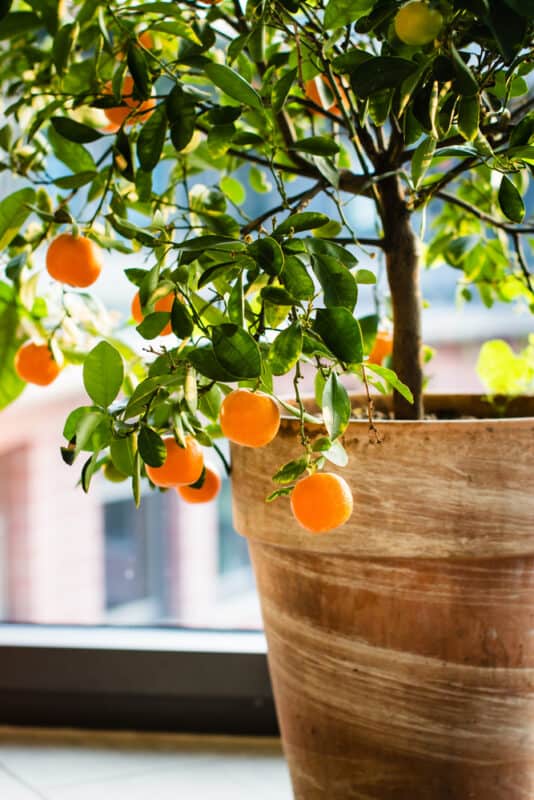

Satsumas don’t thoughts containers in any respect, and the profit is you may transfer them indoors if you happen to stay in an space with icy winters.
Use a minimal 20-gallon container crammed with citrus potting mix. Repot each 5 years or so, or when the roots begin to come out of the underside of the container.
As soon as the tree is mature and within the largest container you wish to use, take away the tree each 5 years or so. Trim the roots again two to 4 inches and repot in the identical container with recent citrus potting combine.
When you preserve repotting in a much bigger container, you received’t be capable to transfer it within the winter, so trimming the roots is an efficient approach to preserve a tree small. That’s truly how they do it within the artwork of bonsai.
You don’t must do a lot in the way in which of pruning when rising satsumas. Once they’re younger, give them some form. As they age, the one actual pruning you must do is to take away useless, broken, or diseased branches.
If there are branches that rub towards one another, take away one among them.
Prune the bottom branches (these lower than 20 inches from the bottom) to cease any low-hanging fruit from touching the bottom. Any progress that emerges beneath the graft union needs to be eliminated, as properly.
Any citrus tree works properly as a companion with satsumas. Across the base or close to the rising satsumas, you may plant:
Some citrus bushes are consistently suffering from ailments and pests. One of many good issues about rising satsumas is that they’re pretty sturdy. As long as you present them with correct water and meals and enhance air circulation with common pruning, they need to be nice.
Satsuma are rather more illness resistant than most different citrus, and they are often completely wholesome whereas different close by citrus endure ailments.


This can be a frequent illness you’ll acknowledge by the orange or yellow warty scabs that type on leaves, stems, or the rind of satsumas. It’s a fungal illness that impacts most citrus, attributable to the pathogen Elsinöe australis.
When you’ve got a moist and humid summer season the place the temperature stays round 65ºF to 75ºF, preserve a watch out for citrus scab. Signs embrace a light-weight pink or brown scab on the pores and skin of the fruit. Additionally, you will see pustules or water-soaked lesions on the leaves.
To keep away from it, preserve weeds and any massive vegetation away from the bottom of the satsuma to enhance airflow. Prune to permit airflow and water the bottom of the tree, not the foliage, because the illness might be unfold by water droplets.
Ensure you get the tree from a good nursery as citrus scab typically enters the property by contaminated bushes.
Often, the fruit isn’t affected inside by citrus scab; it simply seems ugly. However you don’t need it to unfold to different orchards, significantly industrial ones, as a result of the illness renders the fruit unsaleable.
You will have additionally issues with:
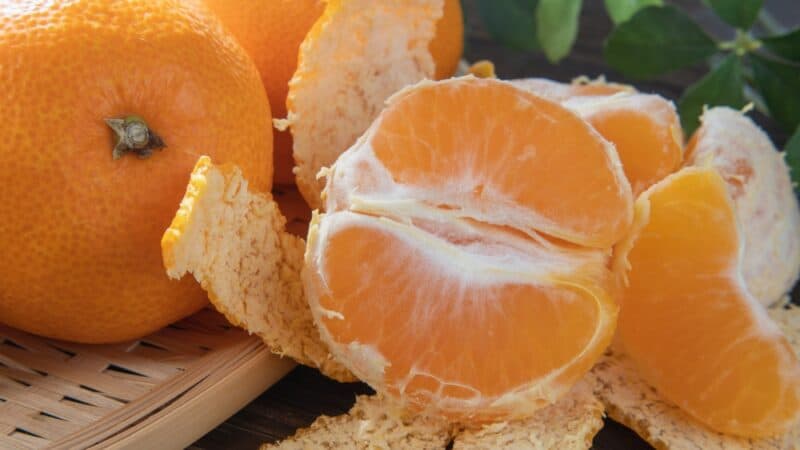

Most satsuma are harvested earlier than December, usually beginning round September, relying on the cultivar you’ve gotten.
Because the skins are so free when ripe, snip the fruit off somewhat than pulling it since you’ll depart a few of the pores and skin on the tree and expose your satsuma flesh.
Retailer within the fridge for a number of weeks.
Yes No
×
Your reply will likely be used to enhance our content material. The extra suggestions you give us, the higher our pages might be.
Facebook Pinterest
Satsuma is without doubt one of the sweetest citruses on the market. Plus, it’s simple to peel and simple to develop. It’s an ideal fruit so as to add to your orchard or citrus grove.
When you’ve grown small, bitter, seed-filled mandarins that pull aside once you attempt to peel them, then rising satsumas will likely be a delight.
Cool climate doesn’t trouble satsumas, and as a dependable performer, your harvests will simply get larger yearly.
When you love satsumas otherwise you simply need an easy-going citrus tree on your backyard, preserve studying.
What’s Satsuma?
The satsuma orange (Satsuma unshiu) is initially from China, however the identify comes from the world of Japan the place a lot of the dad and mom of contemporary cultivars originated.
It’s a semi-tropical evergreen that’s extra chilly hardy than most citrus bushes, and it doesn’t have thorns like some citrus. Lime, I’m taking a look at you.
Hardy in USDA Rising Zones 8 to 11, if you happen to’re keen to place in somewhat further work to guard the tree throughout extended freezes, even these in Zone 7 can succeed at rising satsumas.
The fruits aren’t solely candy, juicy, and just about seed-free, however they’re a dependable supply of immunity-boosting vitamin C.


Satsuma is parthenocarpic, which suggests it develops fruit with out fertilization. This supplies the fruit with minimal or no seeds. It additionally means you don’t want pairs for pollination. The flowers of a satsuma have each female and male elements, making it a dependable cropper.
Additionally it is one of many first citrus to ripen for choosing in lots of areas, so that you don’t have to attend and wait to dig in. There’s a lot to like about rising satsumas. Let’s speak about a few of the finest choices for the house grower, subsequent.
8 Finest Kinds of Satsuma


There are over 100 styles of satsuma. Listed here are a few of the finest for house growers:
1. Miho
This can be a gradual grower that you may plant within the backyard, but it surely’s additionally excellent for container planting, the place you may preserve it pruned to your required measurement and form. It was bred out of ‘Okitsu’ and launched in 1963.
It may develop as much as six toes tall in a container. Within the backyard, ‘Miho’ will develop as much as 12 toes tall and 6 toes broad.
The fruit is considerably oblate and sweeter than the usual fruit. It additionally matures barely earlier.
2. Massive Early
Because the identify says, this satsuma is bigger than others and is prepared sooner than many different cultivars. It has a skinny rind and candy juice.
It’s a dependable cropper prepared for harvest round late September to mid-October.
Bred by Satsuma grower Bonnie Childers out of an ‘Armstrong Early’ mum or dad, it reliably tolerates temps into the 20s.
3. Owari
This can be a frequent satsuma and will even be the one you purchase within the retailer. It’s the mum or dad of many spectacular cultivars and is without doubt one of the commonest to seek out commercially. When you’re rising satsumas, this can be a identify you’ll be coming throughout typically.
‘Owari’ is a late cropper with fruit that’s medium in measurement and candy. The fruit is often seedless, but it surely may need as much as six seeds. The tree will develop between 10 and 15 toes tall.
4. Brown Choose
‘Brown Choose’s’ type is comparatively compact, and the branches are much less droopy than many different satsuma cultivars. A toddler of early-producing ‘Kimbrough,’ the fruit needs to be prepared round October to late November or later.
The rind of this Louisiana-bred cultivar is barely bumpy in comparison with the opposite satsuma, and they’re extraordinarily candy, medium-sized, and simple to peel. The fruit holds properly on the tree if you happen to’re the kind who doesn’t get out instantly in the course of the harvest season.
5. Silverhill
For a fair sweeter than regular satsuma, attempt ‘Silverhill.’ The fruit is barely flatter than different satsumas. This can be a dependable, vigorous tree with upright progress.
‘Silverhill’ was bred by botanist Walter T. Swingle in January 1931, after he observed a tree that wasn’t as injured by a shock Alabama freeze as the opposite ‘Owari’ bushes round it had been. The result’s a tree that may tolerate colder temperatures than different cultivars.
It has been in comparison with ‘Frost,’ one other chilly hardy cultivar.
6. Early St. Anne
Like ‘Massive Early,’ this satsuma is prepared for harvest a few month earlier than the later ones. You might be plucking fruit as early as September. The fruit is medium to massive and has skinny pores and skin that’s simple to peel.
‘Early St. Anne’ was bred from unknown parentage by Louisana State College’s citrus analysis program. The fruits are medium-large and oblate and have a superb tangy, candy taste.
7. Kimbrough
If you’re in search of a high-yielding satsuma, this cultivar needs to be your alternative. ‘Kimbrough’ is bigger than many different cultivars, and it produces extra of them. They’re juicier and simpler to peel than different satsumas, too.
‘Kimbrough’ is late to ripen and the fruits won’t be prepared till November. The orange pores and skin has a reddish tinge to it.
Whereas the tree seems much like ‘Owari,’ it’s extra cold-tolerant.
Easy methods to Propagate Satsuma
Satsuma are comparatively gradual growers. Whenever you purchase a grafted tree, it’s possible a number of years outdated already. Your finest guess is to buy a kind of if you happen to’re desirous to take pleasure in fruits quickly after planting.
If time is in your aspect and also you wish to develop a satsuma from the beginning, you may take a chopping or plant one of many few seeds from inside the fruit, however once more, it will likely be a number of years earlier than you see any satsumas.
Lastly, a satsuma grown from seed received’t be the identical because the mum or dad plant.
Cuttings
In the course of the summer season months, take cuttings about six inches lengthy from a department with an energetic rising tip. Make the lower at a 45-degree angle.
Depart the brand new inexperienced tip and new leaves hooked up, however take away the entire decrease leaves from the remainder of the chopping. Dip the tip of the chopping in a rooting hormone like Bonide’s Bontone II rooting powder.
Plant the cuttings in good high quality seed-raising soil. Insert the underside third of the chopping into the soil and press evenly across the base to agency it into place.
Soak the soil with water and add extra soil if it settles an excessive amount of. Insert a toothpick or piece of wooden close to the chopping to carry up the plastic, and place a plastic bag over the container. This helps retain moisture.
The soil temperature needs to be within the vary of 70-75ºF. Use a warming pad if mandatory. The chopping wants direct solar for no less than six hours per day.
Over the subsequent six weeks, usually verify to ensure the soil isn’t drying out. Moisten as mandatory. On the six-week stage, loosen the plastic bag to let in some air, however depart it on.
In about two months, if there may be new, inexperienced progress on the chopping, take away the plastic bag fully.
Don’t be stunned if the beginning container is adequate for no less than a yr. After you have a lot of new progress, transplant the chopping exterior or into an enormous, everlasting container if that’s the place the satsuma goes.
Seeds


Like with cuttings, rising satsuma from seed is a protracted course of. The ensuing tree received’t be the identical because the mum or dad tree. When you’re feeling adventurous although, comply with these steps.
Discover a seed. Some fruits can have one or two in them, or you should purchase seeds.
Plant the seeds in a pot with seed-raising soil. There are some citrus-specific ones obtainable. Push the seed into the combo ever-so-slightly and barely cowl it with a sprinkle of extra combine. Spray properly with a twig bottle.
Put a plastic bag loosely over the pot and place this in direct daylight the place the inner temperature needs to be round 70ºF to 75ºF. Test each couple of days to make sure the soil stays moist.
After round 60 days, the seed ought to have germinated. Take away the plastic bag and preserve the soil moist till the seedling is about three inches tall.
Transfer the pot exterior the place it can get morning solar. Maintain this rising location till fall when you may switch it to a much bigger container and transfer it inside over winter.
Maintain shifting the container open air within the spring and produce it again indoors earlier than winter for the subsequent few years.
When it’s well-established and has a number of branches, switch it to its closing spot within the backyard, if you happen to’re rising satsumas within the floor. In any other case, plant in its everlasting pot.
Easy methods to Take care of Satsuma


Satsumas love daylight, as do most citrus bushes. Ideally, you need the tree planted the place it can get solar all day, or no less than 10 hours value.
Satsumas require fairly constant heat, although they’re extra cold-hardy than different citrus. To get the most effective fruit, areas that present cool winters and sizzling and humid summers are finest.
A mature tree can take temperatures as little as 14ºF so long as it isn’t for too lengthy. When you’ve got a younger tree, take into account frost and chilly safety like mulching or spend money on a trunk wrap.
To get the sweetest satsumas, winters that sit round 25ºF to 35ºF are finest.
Fertilize with a citrus fertilizer in late January to early February, or once you discover new progress start to look.
Soil pH needs to be round 6.0 to 7.0.
Rising Satsumas in Containers


Satsumas don’t thoughts containers in any respect, and the profit is you may transfer them indoors if you happen to stay in an space with icy winters.
Use a minimal 20-gallon container crammed with citrus potting mix. Repot each 5 years or so, or when the roots begin to come out of the underside of the container.
As soon as the tree is mature and within the largest container you wish to use, take away the tree each 5 years or so. Trim the roots again two to 4 inches and repot in the identical container with recent citrus potting combine.
When you preserve repotting in a much bigger container, you received’t be capable to transfer it within the winter, so trimming the roots is an efficient approach to preserve a tree small. That’s truly how they do it within the artwork of bonsai.
Pruning Satsumas
You don’t must do a lot in the way in which of pruning when rising satsumas. Once they’re younger, give them some form. As they age, the one actual pruning you must do is to take away useless, broken, or diseased branches.
If there are branches that rub towards one another, take away one among them.
Prune the bottom branches (these lower than 20 inches from the bottom) to cease any low-hanging fruit from touching the bottom. Any progress that emerges beneath the graft union needs to be eliminated, as properly.
Finest Companion Vegetation for Satsumas
Any citrus tree works properly as a companion with satsumas. Across the base or close to the rising satsumas, you may plant:
Issues and Options for Rising Satsuma
Some citrus bushes are consistently suffering from ailments and pests. One of many good issues about rising satsumas is that they’re pretty sturdy. As long as you present them with correct water and meals and enhance air circulation with common pruning, they need to be nice.
Satsuma are rather more illness resistant than most different citrus, and they are often completely wholesome whereas different close by citrus endure ailments.
Citrus Scab (Candy Orange Scab)


This can be a frequent illness you’ll acknowledge by the orange or yellow warty scabs that type on leaves, stems, or the rind of satsumas. It’s a fungal illness that impacts most citrus, attributable to the pathogen Elsinöe australis.
When you’ve got a moist and humid summer season the place the temperature stays round 65ºF to 75ºF, preserve a watch out for citrus scab. Signs embrace a light-weight pink or brown scab on the pores and skin of the fruit. Additionally, you will see pustules or water-soaked lesions on the leaves.
To keep away from it, preserve weeds and any massive vegetation away from the bottom of the satsuma to enhance airflow. Prune to permit airflow and water the bottom of the tree, not the foliage, because the illness might be unfold by water droplets.
Ensure you get the tree from a good nursery as citrus scab typically enters the property by contaminated bushes.
Often, the fruit isn’t affected inside by citrus scab; it simply seems ugly. However you don’t need it to unfold to different orchards, significantly industrial ones, as a result of the illness renders the fruit unsaleable.
You will have additionally issues with:
Harvesting Satsuma


Most satsuma are harvested earlier than December, usually beginning round September, relying on the cultivar you’ve gotten.
Because the skins are so free when ripe, snip the fruit off somewhat than pulling it since you’ll depart a few of the pores and skin on the tree and expose your satsuma flesh.
Retailer within the fridge for a number of weeks.
Was this text useful?
Yes No
×
We respect your useful suggestions!
Your reply will likely be used to enhance our content material. The extra suggestions you give us, the higher our pages might be.
Comply with us on social media:
Facebook Pinterest
